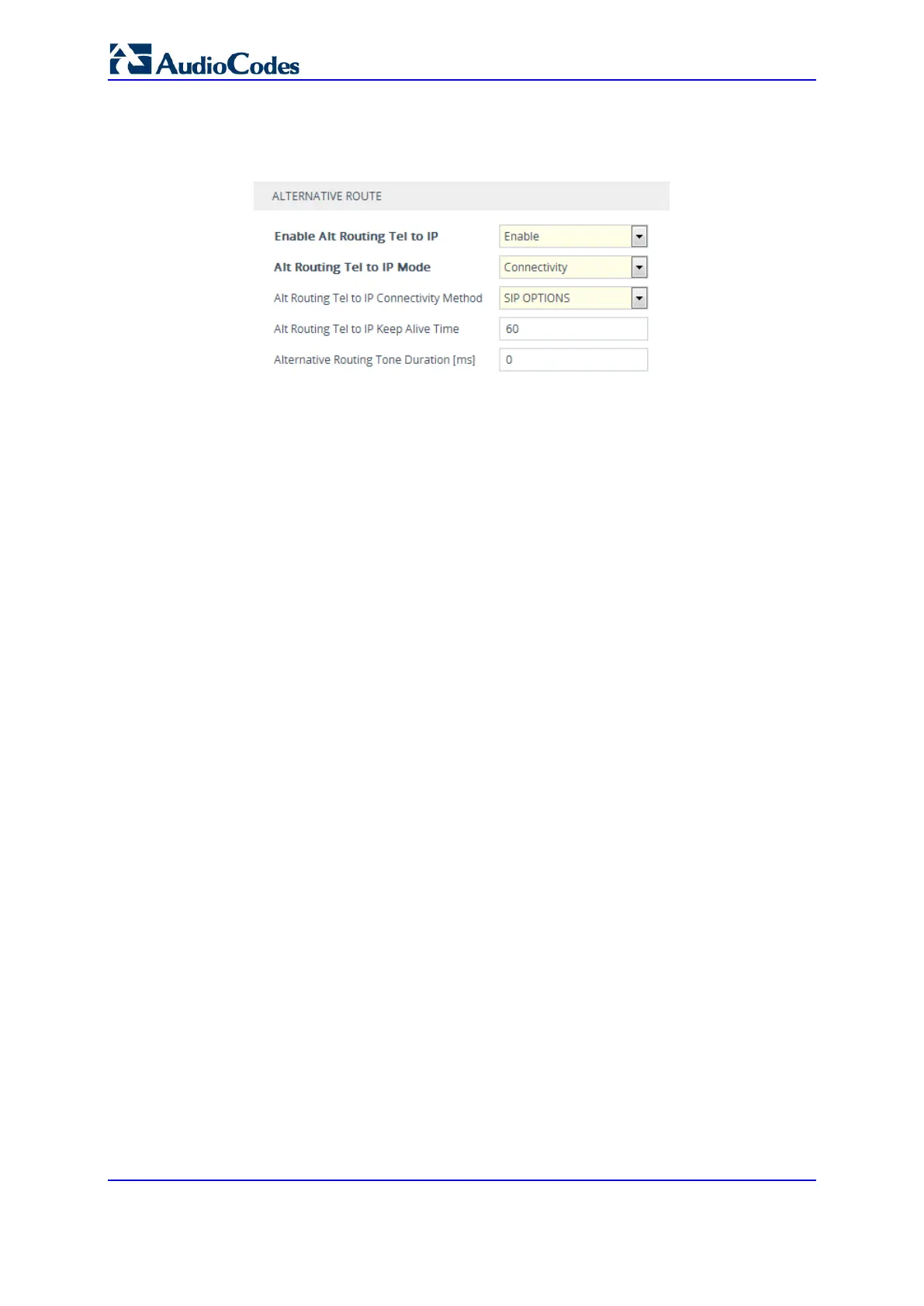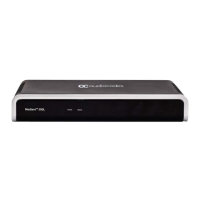User's Manual 494 Document #: LTRT-27045
Mediant 1000B Gateway & E-SBC
2. Open the Routing Settings page (Setup menu > Signaling & Media tab > Gateway
folder > Routing > Routing Settings):
Figure 23-7: Configuring Alternative Tel-to-IP Routing based on Connectivity
3. Under the Alternative Route group, do the following:
a. From the 'Enable Alt Routing Tel to IP' (Tel2IPEnable) drop-down list, select
Enable to enable alternative Tel-to-IP routing based on IP connectivity.
b. From the 'Alt Routing Tel to IP Mode' drop-down list (AltRoutingTel2IPMode),
configure the IP connectivity reason for triggering alternative routing.
♦ Connectivity: Alternative routing is performed if a or SIP OPTIONS message
to the initial destination fails
♦ QoS: Alternative routing is performed if poor QoS is detected. QoS is
quantified according to delay and packet loss calculated according to
previous calls.
♦ Both (above)
c. (For Analog Interfaces Only) In the 'Alternative Routing Tone Duration' field,
configure the duration for which the device plays a tone to the Tel endpoint (for
analog interfaces) whenever an alternative route is used.
d. Enable the connectivity feature (see ''IP Destinations Connectivity Feature'' on
page 491).
23.4.3 Alternative Routing Based on SIP Responses
The device can perform alternative routing based on the received SIP response code (i.e.,
4xx, 5xx, 6xx, or 8xx). If you have configured the response code in the Reasons for Tel-to-
IP Alternative Routing table, the device attempts to re-route the call to an alternative
destination, if configured. You can configure up to 10 SIP response codes in the Reasons
for Tel-to-IP Alternative Routing table.
Typically, the device performs alternative routing when there is no response at all to an
INVITE message. This is done after a user-defined number of INVITE re-transmissions,
configured by the SIPMaxRtx parameter. In such a scenario, the device issues itself the
SIP response code 408 (Request Timeout). You can also configure the device to perform
alternative routing for the following proprietary response codes that are issued by the
device itself:
805 IP Profile Call Limit: The device generates this response code when Call
Admission Control (CAC) limits are exceeded for an IP Group. The CAC rules are
configured in the IP Profiles table (see ''Configuring IP Profiles'' on page
393). When
this occurs, the device sends a SIP 480 (Temporarily Unavailable) response to the
SIP entity.
806 Media Limits Exceeded: The device generates this response code when the call
is terminated due to crossed thresholds of QoE metrics such as MOS, packet delay,
and packet loss (configured in the Quality of Experience Profile table) and/or media
bandwidth (configured in the Bandwidth profile table). When this occurs, the device
sends a SIP 480 (Temporarily Unavailable) response to the SIP entity. This is

